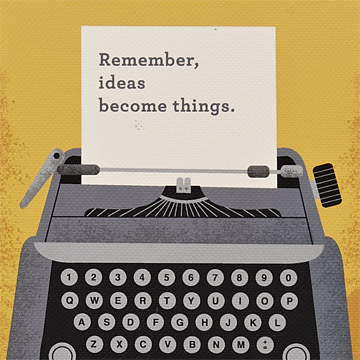Last week we examined whether viewing green rooftops from your office could help you focus on tasks. We continue this discussion on cognitive processes and nature by presenting recent research on creativity.
Creating new ideas, objects and solutions is a process. Ask any painter or writer to tell you about mental and creative blocks and they likely will have a story to share. Creativity in the everyday is highly prized. Success and a sense of accomplishment follows when you are able to tackle a work task with a fresh mind and offer a helpful solution to others.
But, what is creativity? And how does it exist among children, adults, the workplace, and on a canvas? In the 1950s, Guilford described the thoughts involved in the creative process:1
– Being sensitive towards problems (we are aware of things that do not work or fit together and it makes us curious to find out why).
– We get lots of ideas, and our ideas are new and not just replications of old ideas.
– We are flexible and able to shift between different perspectives. We can view a problem from different angles and branch out into new channels of thought.
– We think in a synthesising way – organising ideas into larger, more inclusive patterns and as part of it analyse to see the relevant and interesting aspects.

Many creative thinkers have recognized the potential role of the environment in influencing creativity.2 Typically this has been social or built environments. Several theories and findings now exist supporting the role of outdoor spaces in our ability to focus on tasks, understand our emotions, and feel comfortable in our surroundings.3
As we jump ahead 65 years to 2015, a recent set of interviews with Danish creative professionals reveals new insight about role of nature in the creative process.4 Mirroring the four points of the creative process listed above, interviewees said:
- When thinking about being sensitive towards problems: “In nature nothing is locked, it changes every day. It appeals to curiosity, alertness, and presence. What’s happening here?” (Designer/consultant)
- When we have many new ideas: “The forest provides a high ceiling; it’s a lovely place to be. Being able to see infinitely far away over the water makes you let go of all the things you have to do. [. . .] in nature you are allowed to think wild ideas, and big thoughts, and dream yourself away into one’s inspiration where it all starts to get exciting.” (Silversmith)
- To be flexible and open: “I am most creative when I have fun and play”. (Painter)
- The last phase, synthesizing ideas into a pattern or outcome, occurred less for interviewees while in a natural space. Participants felt that once they returned to their office or workspace after being outside or viewing nature images they were more able to focus and develop their inspiration. This phenomenon is supported by research findings showing nature’s ability to aid in mental fatigue recovery.
The researchers offer practical advice from their preliminary interviewees. They suggest creative professionals use outdoor spaces as part of their creative process. Their findings also add to the ever growing body of evidence showing how green spaces in our public, private, and office spaces are beneficial to our holistic health.
Citations:

